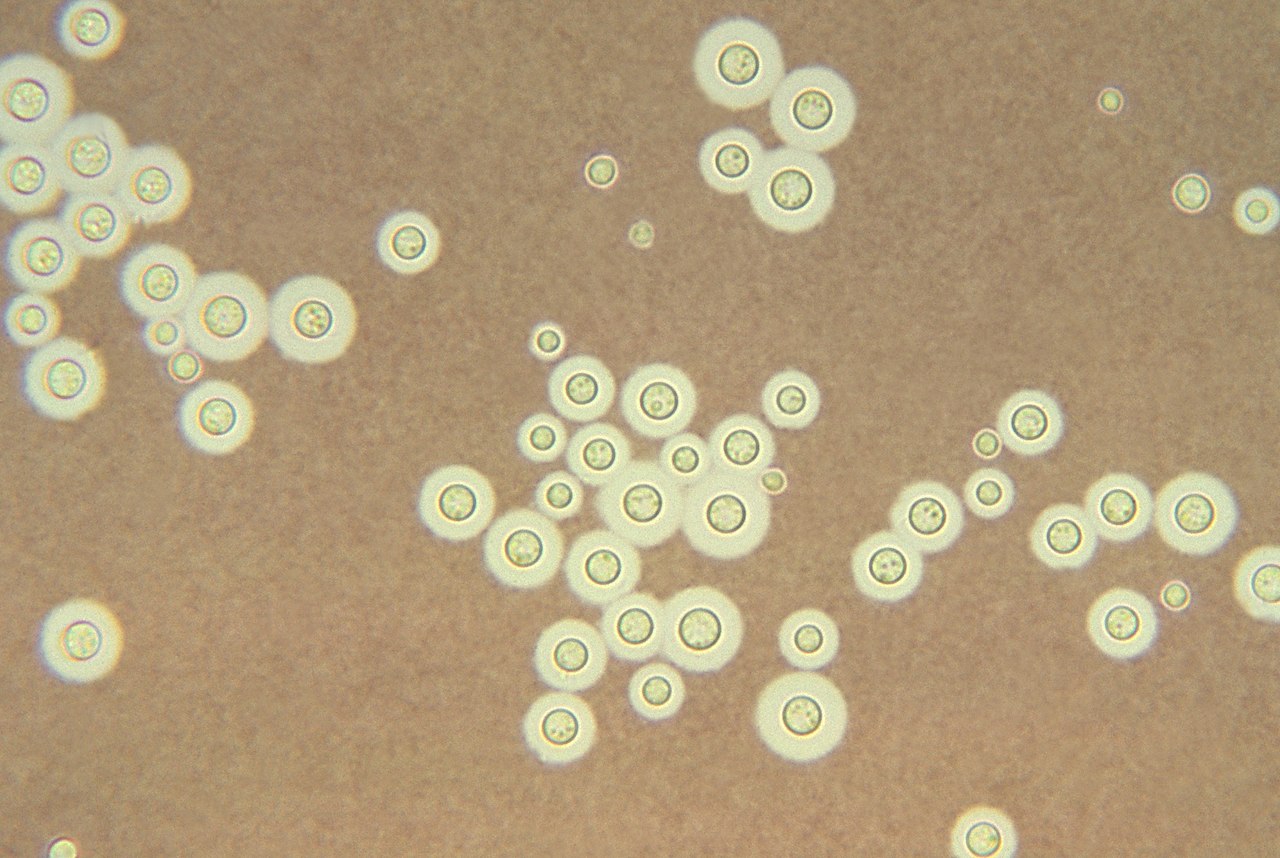- Species
- Tools
- Expression Profiles
- Compare profiles
- Create heatmap
- Export expression levels
- Expression Specificity
- Compare specificities
- Find specific profiles
- Co-expression Networks
- Create custom network
- Find enriched clusters
- Search

Cryptococcus (Greek for "hidden sphere", literally "hidden berry") is a genus of fungi, which grow in culture as yeasts. The sexual forms or teleomorphs of Cryptococcus species are filamentous fungi in the genus Filobasidiella. The name Cryptococcus is used when referring to the yeast states of the fungi. The cells of these species are covered in a thin layer of glycoprotein capsular material that has a gelatin-like consistency, and that among other functions, serves to help extract nutrients from the soil. The C. neoformans capsule consists of several polysaccharides, of which the major one is the immunomodulatory polysaccharide called glucuronoxylomannan (GXM). GXM is made up of the monosaccharides, glucuronic acid, xylose, and mannose and can also contain O-acetyl groups. The capsule is functioning as the major virulence factor in cryptococcal infection and disease. Meiosis in C. neoformans could potentially promote DNA repair in the DNA-damaging environment caused by the oxidative and nitrosative agents produced in macrophages that might promote recombinational repair in the oxidative and DNA-damaging environment of the host macrophage.